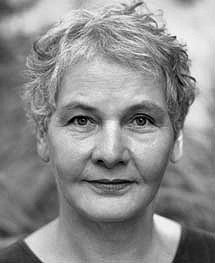 |
|||||||||||||||
Christiane Nusslein-Volhardo |
|||||||||||||||
|
PhD 1973 University of Tubingen Direktorin - Abteilung 3 (Genetik) |
|||||||||||||||
 |
|||||||||||||||
"Transformations in Developmental Genetics" |
|||||||||||||||
Biography |
|||||||||||||||
|
Christiane Nusslein-Volhard is best known for her pioneering work in Drosophila (fruit fllies) for which she along with Eric Wieschaus and Edward Lewis won the Nobel Prize in 1995. Between 1978-1981 Christiane Nusslein-Volhard and Eric Wieschaus worked together sceening mutant Drosophila in order to discover genes that are important in early embryonic patterning. No scientist before had undertaken this kind of project before despite the fact that technology for mutagenesis and embryo screening had been around since the 1930s. While the technology required to perform the mutant screen was not new, at the outset it was uncertain what the outcome of their screen would be (a potentially risky move early in their careers). They narrowed their focus on segmentation defects, and were able to identify 15 genes that when mutated affect embyonic segmentation. The significance of this work is that they were the first to describe early pattering genes in the fly that also function in early pattering in humans. Mutation of these genes likley cause many of the developmental defects that cause spontaneous abortions in humans. Later in 1982, Christiane Nusslein-Volhard and collaborators conducted a maternal effect mutant screen on the third Drosophila chromosome which is important work because maternal RNA and proteins are depostited in eggs and are responsible for controlling much of the ealy development in animals. Many of the genes important in axis patterning were discovered in this screen. Beginning in 1984, Christiane Nusslein-Volhard began to become intereted in working with zebrafish, at the time being developed as a vertebrate model orgainism. However it was not until the early 1990s that she and her collaborators began a massive mutant sceen in this organism, the results of which were published in a special issue of Development in 1996. If not for the pioneering work of Christiane Nusslien-Volhard and her collaborators, we would have very little knowledge of the genes important in early animal development, knowledge which is essential not only to developmental biology but to advancing our understanding of the causes of human disease and birth defects. |
|||||||||||||||
Selected Publications |
|||||||||||||||
| Nusslein-Volhard C, Wieschaus E.Mutations affecting segment number and polarity in Drosophila. Nature. 1980 Oct 30;287(5785):795-801. Anderson KV, Nusslein-Volhard C. Information for the dorsal--ventral pattern of the Drosophila embryo is stored as maternal mRNA. Nature. 1984 Sep 20-26;311(5983):223-7. Nusslein-Volhard C, Frohnhofer HG, Lehmann R. Determination of anteroposterior polarity in Drosophila. Science. 1987 Dec 18;238(4834):1675-81. Driever W, Nusslein-Volhard C.The bicoid protein determines position in the Drosophila embryo in a concentration-dependent manner.Cell. 1988 Jul 1;54(1):95-104. Development. 1996 Dec;123. This entire issue is dedicated to highlighting the mutants from a massive zebrafish mutant screen Odenthal J, Nusslein-Volhard C. Fork head domain genes in zebrafish. Development Genes and Evolution 1998 Jul; 208 (5): 245-258. Warga RM, Nusslein-Volhard C. Origin and development of the zebrafish endoderm. Development. 1999 Feb;126(4):827-38. Knaut H, Pelegri F, Bohmann K, Schwarz H, Nusslein-Volhard C. Zebrafish vasa RNA but not its protein is a component of the germ plasm and segregates asymmetrically before germline specification. Journal of Cell Biology. 2000 May; 149 (4): 875-888. |
|||||||||||||||
Linkss |
|||||||||||||||
| Lecture on the occasion of the Nobel award in 1995: http://nobelprize.org/medicine/laureates/1995/nusslein-volhard-lecture.html Nobel press release 1995: http://nobelprize.org/medicine/laureates/1995/press.html |
|||||||||||||||
 |
||||